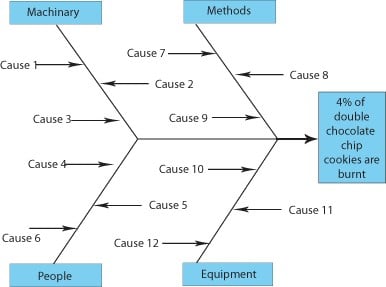If food and beverage manufacturers can’t track batches, formulas, items, actions, dates, and regulations to ensure quality throughout their operations and extended supply chain, they’ll lose business to competitors with a better handle on quality control.
Because food quality control is so complex, the key to success lies in standardizing and automating your quality process and making it an effortless part of your daily operations.
Rid Yourself of Manual Processes and Tracking
Gone are the days when even the smallest food and beverage manufacturers can manage their workflows and critical manufacturing/distribution processes via spreadsheets and other point applications – there are too many inputs, outputs, and occurrences to track. Which suppliers use organic ingredients and how can you continuously track that? Which inputs have which expiry dates? Are there new consumer concerns over certain ingredients? How will recipe changes affect yields and quality? When quality issues arise, can you perform accurate, real-time backward/forward batch and lot traceability?
You need to be able to answer those questions – and more – to stay competitive, and the best way to do so is with modern ERP.
Modern ERP is the Cost-effective Means of Doing QC Tracking Right
You can only perform batch (or lot) management effectively when you have a single information system that unifies your food-related data elements: expiry dates, traceability data, quality control data, etc. SAP Business One offers both out-of-the-box and customized processes that can be automated to append all QC information to every batch of food you produce. This starts with the information associated with your raw materials and vendors and continues through production and in-the-field quality reporting. As a result, you gain complete product traceability and streamlined response to any customer-facing issues, such as spoilage, safety alerts, and FDA-mandated recalls.
Better Recipe Management
 SAP Business One provides bill of material (BOM) and recipe management, so you never miss anything in the products you manufacture. The BOM/recipe provides a complete listing of every input into your recipes and products and offers a BOM for each phase of operations. For example, the supplier BOM provides an item-by-item breakdown of the inputs to a food product you’ll manufacture, while the production BOM shows the ingredients that went into the production process for that food.
SAP Business One provides bill of material (BOM) and recipe management, so you never miss anything in the products you manufacture. The BOM/recipe provides a complete listing of every input into your recipes and products and offers a BOM for each phase of operations. For example, the supplier BOM provides an item-by-item breakdown of the inputs to a food product you’ll manufacture, while the production BOM shows the ingredients that went into the production process for that food.
SAP Business One automates more than BOM/recipe functionality – it also tracks the availability of raw materials as well as the quantity necessary to satisfy sales forecasts, then generates automatic orders aligned to production forecasts. Additionally, when a recipe needs adjusting, you can track raw inputs back to individual suppliers, helping you involve suppliers earlier in the change process and saving your business the costs related to receiving incorrect materials you can no longer use.
SAP Business One uses automation to make tracking food product quality easier and faster. If you lack a single view and standardized processes for managing your recipe and food product data, the time to start is now – it’s the best way to cost effectively maintain a competitive advantage in an increasingly demanding market.










Leave a comment